#coriander cavaverish
Text

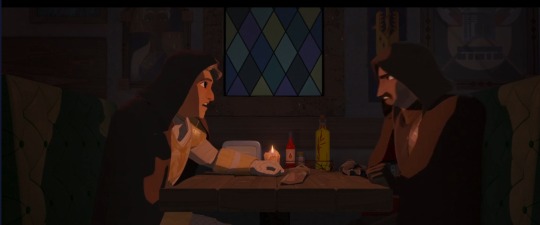


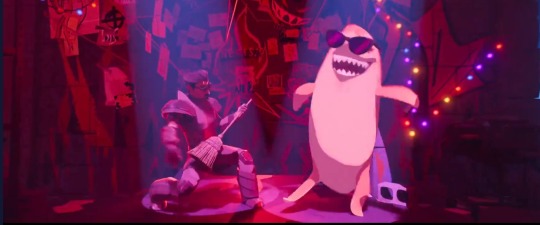
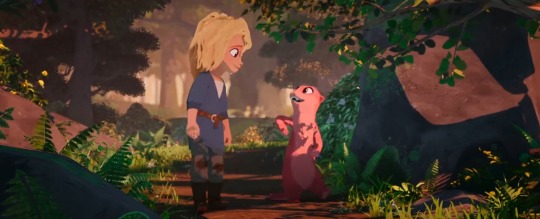

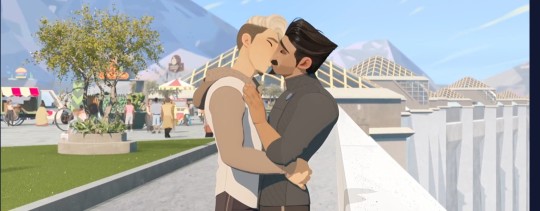
NIMONA (2023) - Troy Quane Nick Bruno
#nimona#netflix nimona#netflix#movie#peli#pelicula#peliculas#frases de peliculas#2023#streaming#ambrosius goldenloin#eugene lee yang#chloe grace moretz#ballister boldheart#riz ahmed#nate knight#rupaul#coriander cavaverish#sarah sherman#thoddeus sureblade#beck bennett#frances conroy#julio torres#troy quane#nick bruno#annapurma pictures#double negative#annapurna animation
84 notes
·
View notes
Text
Nimona Spoiler-Filled Review [part 1]
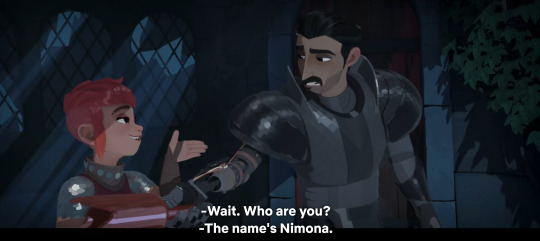
Nimona is a science fantasy adventure-comedy film. It is based on ND Stevenson's webcomic, and later graphic novel, of the same name. Annapurna Animation, Vertigo Entertainment, DNEG Animation, Blue Sky Studios, and 20th Century Animation produced the film. Nick Bruno and Troy Quane directed it. Karen Ryan and Julie Zackary are producers. This piece was written during the 2023 WGA and SAG-AFTRA strikes. Without the labor of the writers and actors currently on strike, Nimona, being reviewed here, wouldn't exist. As a warning, there will be discussion of death, murder, depression, suicide, and other distressing topics.
Reprinted from Pop Culture Maniacs and Wayback Machine. This was the forty-second article I wrote for Pop Culture Maniacs. This post was originally published on July 31, 2023.
The film begins in an almost Disney-like fashion, with the opening of a scroll. Viewers are told about a kingdom where everyone lived in peace with nothing to fear. A "great and terrible evil" is said to be lurking in the shadows. As the narrator states, in this "dark hour", a hero named Gloreth (voiced by Karen Ryan) rose up, banishing the evil. She vowed that her people would never be in such a vulnerable place again, thanks to an elite force of knights. Their descendants were tasked with protecting the kingdom for years to come. Following this, the narrator declares that if you want a happily ever after, you can never let your guard down because the monsters are "always out there". This film takes place 1000 years later.
What follows is one of the film's most important plot points: the beginning of Ballister Boldheart's "villain arc". While he is at the knighting ceremony with his boyfriend Ambrosius Goldenloin (voiced by Eugene Lee Yang), Queen Valerin (voiced by Lorraine Toussaint) declares Ambrosius, who is called Goldenloin in the rest of this review, a knight. However, she only calls him a "hero of the realm". To make matters worse, his sword activates, causing him to stab the Queen, and kill her. Even though it is evident that someone set him up, everyone is against him, and he becomes a fugitive.
Before going further, it is worth noting the amazing cast choices with this film. Apart from Eugene Lee Yang, Lorraine Toussaint, and Karen Ryan, there's Chloë Grace Moretz as Nimona, Riz Ahmed as Ballister, and Frances Conroy as The Director. This is enhanced by RuPaul and Indya Moore as announcers Nate Knight and Alamzapam Davis. Even two Saturday Night Live cast members voice characters: Sarah Sherman as Coriander Cavaverish and Beck Bennett as Sir Thoddeus Sureblade. In addition, Zayaan Kunwar voices a young Ballister, Charlotte Aldrich as young Gloreth, and Cindy Slattery as Syntheya (voice of the kingdom). Lastly, Julio Torres voices Diego the Squire, Sommersill Tarabek an Institute Analyst, and Lylianna Eugene as Patinece. Even ND Stevenson cameos as cereal mascot Kwispy Dragon.
What is interesting about these cast choices is that the voice actors have a lot of range. Moretz previously played Wednesday Addams in the two animated Addams Family films in 2019 and 2021, while Ahmed did the English dubbed voice of Takai in Weathering with You and Amin Nawabi in Flee. Furthermore, Yang voiced Toul in Star Wars: Visions, Toussaint famously voiced Shadow Weaver in She-Ra and the Princesses of Power, RuPaul as Mr. X in Amphibia, Moore as Shep in Steven Universe Future and Brooklyn in Moon Girl and Devil Dinosaur, while Conray has provided her voice to characters in We Bare Bears, Summer Camp Island, and many other (mostly live-action) productions since 1976.
Adding to this, Yang is outwardly gay and of South Korean descent. Ahmed is British-Pakistani. Toussaint is a Black woman born in Trinidad and Tobago. RuPaul is a Black gay man (and drag queen). Torres is a gay man born in El Salvador. Eugene is a young Black girl. Moore is a transgender non-binary Black woman with Dominican, Puerto Rican, and Haitian ancestry.
This diversity translates onto the screen. In the original comic, Goldenloin was a White man, but in this film, he is East Asian, like his voice actor. Similarly, Ballister is Asian descent in this film as well. Some online chatter claimed that the Queen Valerin's death was "anti-Black". However, this faulty and wrongheaded claim shows a lack of understanding about the film. For one, Valerin is beloved by everyone in the Kingdom. As such, everyone wants to avenge her death. Secondly, there are two other prominent Black characters, new anchors Alamzapam Davis and Nate Knight.
Furthermore, although Ballister is the one who "killed" Valerin, it is later revealed that this is a set up by The Director of the infamous Institute. Even if Valerin had survived, she would still be heading an oppressive system built on lies and deceit. So, there would have been a confrontation at some point. But, it's hard to know when that would have happened.
youtube
There is more to this film than its diversity and cast choices. For one, Nimona has a strong chaotic and "riot grrrl" energy to her. This is clear from her introduction about 10 minutes into the film, when she breaks into Ballister's "secret lair" (an abandoned tower) and "applies" to be his sidekick. Ballister isn't sure about her, but she tells him that "every villain needs a sidekick". After spurning her, he goes off to get arrested (despite his claim he won't be). That whole scene, which is less than three minutes long, begins the great dynamic between Nimona and Ballister. Surely, it is different from what is in the original comic, but that's ok.
Ballister's character development is clear. He goes from being an "innocent" hero who loves the Institute to a "villain" determined to clear his name. He wants to find who is responsible for killing Valerin, no matter what. Nimona helps him along the way. She notes that when the world sees you as a villain, you are one, no matter how hard you try and change that perception. That's an important message, especially when certain groups and individuals are villainized by reactionary individuals (and groups).
I also liked how fluid Nimona is with her forms. She changes into a rhino, a bear, a gorilla, a monkey, an ostrich, a whale, and a cat at different points in the film. Her ability to easily change her form is shown effortlessly in the film. This embodies the power of animation. If this film had been live action, rather than animation, it may have been an unmitigated disaster. Through her transformations, Nimona becomes a more relatable character, despite her desire for destruction. After all, she is excited when there are explosions through the Institute, with fire in her eyes, and saying "metal". Her relatability may be heightened for those who are gender non-conforming, trans, non-binary, or combination of all three.
Goldenloin's leadership of the mission trying to track down Ballister says a lot. It shows how committed someone can be to oppressive systems, even if you love the person being targeted. ND Stevenson noted in one interview that it is convenient for the Institute to cast Ballister as a villain and Goldenloin as the opposite.
This relates to the argument that at times cisgender gay individuals fit into corrupt institutions and systems that the trans community can't. Ballister does this during the film. At the same time, the Institute claims they are taking "every precaution" to keep everyone safe. They even have tests to stop "monster attacks". All these tactics attempt to keep people in a state fear. Similar tactics were employed by Clu and his minions, like Pavel and Tesler, in Tron: Uprising. In that series, those villains attempted to marginalize the Renegade and get everyone to turn against him.
In an undoubted criticism of mass surveillance, the Institute look at their cameras and use facial recognition in an attempt to locate Ballister. Despite this, Nimona and Ballister still escape, with Nimona telling how she ended up becoming a shapeshifter, and even kidnap the squire (voiced by Julio Torres). He reveals that the Director set up Ballister, with the video evidence to prove it, with Nimona later uploading this video. It is implied that Nimona doesn't feel pain. Later, in another relatable moment, Nimona says she feels worse when she doesn't shapeshift, saying it makes her insides feel itchy.
Nimona is not alone in criticism of surveillance. At one point, in the ever-controversial and problematic gen:LOCK, Col. Raquel Marin demands loyalty, belief in the chain of command. She is so paranoid of people criticizing her that she orders covert surveillance on the gen:LOCK team (the show's protagonists). There are many other examples of this in fiction. For instance, Philip K. Dick's The Minority Report and A Scanner Darkly, The Lord of Rings move adaptations (specifically the all-seeing Eye of Sauron), THX 1138 (1971), Brazil (1985), V for Vendetta (2005), The Dark Knight (2008), and Snowden (2016) all have commentary which is critical of mass surveillance.
The rest of the film involves attempts to expose the Director for her crimes. In the process, the cruelty of the world is shown. The Institute's Knights try to electrocute her and a little girl declares she is a "monster". The latter breaks her. She comments that she doesn't know if it is scarier that everyone in the Kingdom wants to put a sword through her heart or that sometimes she wants to let them do that. Ballister agrees with her. But he reassures her that no matter what they do, they can't change how people see them. This brings me to one of the best parts of the film: when Nimona shapeshifts into Goldenloin. She does so that the Director will admit her crimes and note that she framed Ballister.
Unsurprisingly, the Director tells Goldenloin she is innocent. In a TV broadcast, she inspires fear in people, declaring that anyone around them can be the "monster". This is meant to increase public support for the Institute. She caps this off by lying, claiming she isn't the one in the video, pointing to the fact that Nimona is a shapeshifter. To make matters worse, Goldenloin causes Ballister to doubt his faith in Nimona and she flees from the Institute's knights, who now know the location of her secret headquarters. As she runs away and hides, she remembers playing, many years prior, with Gloreth, until the village residents pull them apart, surround her. She inadvertently causes a fire and Gloreth sides with ignorant adults of the town, declaring that Nimona needs to go back to "whence she came", back to the shadows.
Nimona then alludes to how depression and anger can lead to suicide. Nimona attacks the walled city, and despite their attempts to stop her, she goes onward. In the process, the Director shows her true colors. She wants to turn the cannons on the city, even though many innocent people will die! The attempt by Nimona to take her own life, to have the statue go through her heart, is stopped by Ballister who tells her she isn't alone and apologizes for her actions. As Stevenson noted in one interview, Ballister isn't a bad person, but doesn't understand everything Nimona is going through, even though he grows through the movie.
youtube
The film ends with the Director expressing her commitment to the oppressive system. She claims that Nimona is a threat to their "way of life". Nimona appears to sacrifice herself and transforms into a huge phoenix. As a result, the Director is killed, and a wall is destroyed. However, this isn't the end. There is a time skip. The kingdom has changed, with the former wall-breach becoming a trade road, while Ballister and Nimona are honored as heroes. Ballister is with Goldenloin, in a scene which reminds me of when Troy Sandoval and Benson Mekler run a restaurant side-by-side in the Kipo and the Age of Wonderbeasts series finale.
When revisiting his old hideout, Ballister remembers his time with Nimona, fixes up the place, and hears something which sounds like her. It is heavily implied that she has resurrected, bringing him great joy. This means that there is the possibility of a sequel or continuation in some form.
There have been many reviews of the film, whether in Variety, Empire, The Hollywood Reporter, Screen Daily, The Guardian, and Associated Press. None mention a criticism I saw online: that the film slimmed Nimona down from her chubby/fat/overweight self in the comic. I remember people claiming the same happened with Steven Universe over the course of that series. Fans had various explanations for that. As for Nimona, Stevenson stated that it was very important to him that Nimona's body type be accurate in the film.
In one interview he noted that Nimona is "chubby...curvy...never sexualized, and...gender-nonconforming". He added that she "has her own unique style...[and] chooses to look this way." In another interview, Stevenson noted that it was "very healing" to draw Nimona's body type because he had an hourglass-teenager body type which he was uncomfortable with. He further explained that Nimona is "not constrained by her body."
The film is different from the comic in many ways. Even so, Nimona is still an "embodiment of that feeling of limitless possibility". The film encourages audience members to question the labels people have assigned them,. It focuses on the ability of people to change and personal identity. As such, it should be no surprise that animators/creators such as Vivienne Medrano, Daron Nefcy, Michael Rianda, and Matt Braly, praised the film, along with many others on social media.
It is almost a miracle the film was made at all. In 2015, 20th Century Fox acquired the animation film rights to Nimona. The scheduled release was February 2020, with Blue Sky Studios doing the animation work. However, this changed when Disney gobbled up 20th Century Fox. As a result, the film was delayed to March 2021 and again to January 2022. To make matters worse, the pandemic caused remote production, adding a strain on the film's crew. The film's future was thrown into question when Disney announced that Blue Sky Studios was being shut down and ended the film's production. While there will continual speculation as to why Disney did this, some argued that Disney cancelled the film because of its LGBTQ representation.
Annapurna Pictures revived the film. DNEG Animation was added as an animation partner. Despite this change, the voice cast was retained. Later, reporting revealed that the film was the first release of Annapurna's new division, Annapurna Animation. The latter may be the division under which Hazbin Hotel is released. It will build upon an oft-watched indie animated pilot. In contrast, this film built upon what Blue Sky Studios completed before Disney closed the studio. This meant that the film wasn't started "from scratch". On a related note, I wish that Nimona would have been an animated series, rather than a film, as they could have explored more of the characters, but the film is strong on its own.
There is no doubt that more films like Nimona need to be in the world. This film comes at the same time that animated films like Spider-Man: Across the Spider-Verse and Elemental have done well. Others, like Ruby Gillman, Teenage Kraken have bombed at the box office, or have only been released on streaming platforms. The latter is the case for Justice League X RWBY: Super Heroes and Huntsmen: Part One, with a second part reportedly coming on October 31st.
Nimona would not be possible without hard work of the writers, animators, storyboarders, and other crew. A largely-circulated spreadsheet in which people anonymously described their conditions in animation studios does not mention Annapurna Pictures or Annapurna Animation. Two reviews on Glassdoor are diametrically opposed. One praises Annapurna and another is very critical. So, the true work conditions are hard to determine. The same spreadsheet includes reviews describing DNEG as having low pay, disorganization, and overwork.
There is no doubt that that each member of the crew worked hard on this film, even though their working conditions may not have been the best. This film aired 59 days after the writer's strike began and 14 days after the actor's strike began. Those individuals are represented by WGA and SAG-AFTRA. Both strikes are paired together in a Wikipedia page entitled "2023 Hollywood labor disputes". The script and work had been stockpiled. This allowed for the film to be aired. Netflix has become a struck company for striking actors and workers.
© 2023 Burkely Hermann. All rights reserved.
#nimona#nd stevenson#swords#films#lorraine toussaint#rupaul#chloe grace moretz#eugene lee yang#indya moore#riz ahmed#ballister boldheart#ballister blackheart#ballister x ambrosius#nimona ballister#mass surveillance#shapesshifters#mental illness#tw: death#tw: violence#tw: suicide#tw: long post#tw: depression#fat character#writers strike#actors strike#Youtube
17 notes
·
View notes